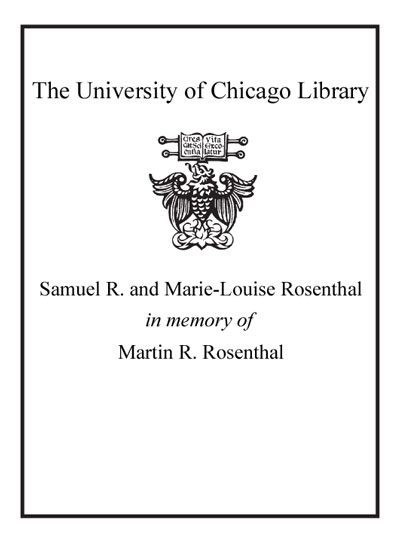Review by Choice Review
In 11 essays, Shugart (Univ. of Virginia) details how human lack of ecological understanding has caused the loss of many species and may eventually result in humans' own demise. Shugart believes that people's failure to recognize that nature is dynamic is at the root of the many ecological disasters that have taken place since the human species became "domesticated." He begins each chapter with a short excerpt; e.g., chapter 1 begins with a quote about the lark spoken by Petruchio in Shakespeare's Taming of the Shrew. As the chapters progress, the excerpts are devoted to human interactions with animals more than to animals themselves. Chapter facts are fully footnoted, with references in a separate notes section organized by chapter. The book is illustrated mostly by drawings, many of which are by Audubon. Some of the animals covered are the ivory-billed woodpecker, penguins, the African quela, the beaver, the wolf, and the European rabbit. Topics discussed include domestication, extinction, and habitat change via fragmentation. The comparison between the American passenger pigeon and the African quela provides insight into how birds with large populations can have different end points--extinction for the pigeon and continued existence for the quela. This book is a delight to read and very thought provoking. ^BSumming Up: Recommended. All levels. L. T. Spencer Plymouth State University
Copyright American Library Association, used with permission.
Review by Booklist Review
Say the words terrestrial ecology and most readers will turn away, remembering all those boring high-school or college lectures. Interest in animal stories, though, is always high. Ecologist Shugart has ingeniously combined fascinating tales of real animals, rare or common, extinct or ubiquitous, with clear exposition of the ecological principles the animal parable illustrates. The result is a highly readable treatise on the balance of nature and the role of environmental change. Using five bird and five mammal species, Shugart first presents a story about an animal, then expands the narrative to include other species as he explains the ecological concept in question. In recent history, humans have caused the major changes of the planet, and Shugart points out that following ecological principles will protect future landscapes. Extensive chapter notes and clear illustrations round out an excellent choice for science-minded readers. --Nancy Bent Copyright 2005 Booklist
From Booklist, Copyright (c) American Library Association. Used with permission.
Review by Publisher's Weekly Review
The "balance of nature" trope beloved of lion vs. wildebeest wildlife documentaries reassures viewers of the robustness of the ecological equilibrium. This engaging collection of essays, by contrast, emphasizes the fragility of nature's equilibrium by exploring the wide-ranging, often irreversible, consequences of disturbing it. Ecologist Shugart structures each chapter around a paradigmatic animal species whose travails or triumphs illustrate important principles of environmental change. Some, like the now extinct ivory-billed woodpecker, are done in by habitat depletion, while others, like the European rabbits that overran Australia, are themselves the agents of natural catastrophe by virtue of their own success. While Shugart explores the effects of earthquakes and wildfires, people are a constant presence in these stories; their pervasive destabilizing effects on the environment are comparable, in his view, to the asteroid impacts that touched off the mass extinctions of ages past. Along the way, Shugart explains concepts in theoretical ecology and ladles out plenty of fascinating lore on such topics as the domestication of animals and the amazing methods by which migratory birds navigate the globe. The result is a lucid, thought-provoking science popularization with an unobtrusive environmentalist message. (Jan.) (c) Copyright PWxyz, LLC. All rights reserved
(c) Copyright PWxyz, LLC. All rights reserved
Review by Choice Review
Review by Booklist Review
Review by Publisher's Weekly Review


